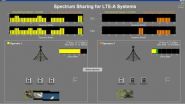(Press-News.org) American scientists believe a new procedure to repair severed nerves could result in patients recovering in days or weeks, rather than months or years. The team used a cellular mechanism similar to that used by many invertebrates to repair damage to nerve axons. Their results are published today in the Journal of Neuroscience Research.
"We have developed a procedure which can repair severed nerves within minutes so that the behavior they control can be partially restored within days and often largely restored within two to four weeks," said Professor George Bittner from the University of Texas. "If further developed in clinical trials this approach would be a great advance on current procedures that usually imperfectly restore lost function within months at best."
The team studied the mechanisms all animal cells use to repair damage to their membranes and focused on invertebrates, which have a superior ability to regenerate nerve axons compared to mammals. An axon is a long extension arising from a nerve cell body that communicates with other nerve cells or with muscles.
This research success arises from Bittner's discovery that nerve axons of invertebrates which have been severed from their cell body do not degenerate within days, as happens with mammals, but can survive for months, or even years.
The severed proximal nerve axon in invertebrates can also reconnect with its surviving distal nerve axon to produce much quicker and much better restoration of behaviour than occurs in mammals.
"Severed invertebrate nerve axons can reconnect proximal and distal ends of severed nerve axons within seven days, allowing a rate of behavioural recovery that is far superior to mammals," said Bittner. "In mammals the severed distal axonal stump degenerates within three days and it can take nerve growths from proximal axonal stumps months or years to regenerate and restore use of muscles or sensory areas, often with less accuracy and with much less function being restored."
The team described their success in applying this process to rats in two research papers published today. The team were able to repair severed sciatic nerves in the upper thigh, with results showing the rats were able to use their limb within a week and had much function restored within 2 to 4 weeks, in some cases to almost full function.
"We used rats as an experimental model to demonstrate how severed nerve axons can be repaired. Without our procedure, the return of nearly full function rarely comes close to happening," said Bittner. "The sciatic nerve controls all muscle movement of the leg of all mammals and this new approach to repairing nerve axons could almost-certainly be just as successful in humans."
To explore the long term implications and medical uses of this procedure, MD's and other scientist- collaborators at Harvard Medical School and Vanderbilt Medical School and Hospitals are conducting studies to obtain approval to begin clinical trials.
"We believe this procedure could produce a transformational change in the way nerve injuries are repaired," concluded Bittner.
### END
New procedure repairs severed nerves in minutes, restoring limb use in days or weeks
Team apply new procedure to rapidly induce nerve regeneration in mammals
2012-02-06
ELSE PRESS RELEASES FROM THIS DATE:
New technique dissolves blood clots in the brain and lowers risk of brain damage after stroke
2012-02-06
Johns Hopkins neurologists report success with a new means of getting rid of potentially lethal blood clots in the brain safely without cutting through easily damaged brain tissue or removing large pieces of skull. The minimally invasive treatment, they report, increased the number of patients with intracerebral hemorrhage (ICH) who could function independently by 10 to 15 percent six months following the procedure.
At the International Stroke Conference taking place January 31 through February 2 in New Orleans, the researchers will present their findings from 93 patients, ...
New technology to tackle treatment-resistant cancers
2012-02-06
Free-flowing cancer cells have been mapped with unprecedented accuracy in the bloodstream of patients with prostate, breast and pancreatic cancer, using a brand new approach, in an attempt to assess and control the disease as it spreads in real time through the body, and solve the problem of predicting response and resistance to therapies.
In comparison to a previous generation of systems, the researchers state their test showed a significantly greater number of high-definition circulating tumour cells (HD-CTCs), in a higher proportion of patients, by using a computing-intensive ...
NYU Courant researchers weigh methods to more accurately measure genome sequencing
2012-02-06
Lost in the euphoria of the 2003 announcement that the human genome had been sequenced was a fundamental question: how can we be sure that an individual's genome has been read correctly?
While the first full, individual genome was sequenced a decade ago, given the vast genetic variation across the world's seven billion people, not to mention the differences in makeup even among close relatives, the question of accurate sequencing for individuals has continued to vex researchers.
With companies now projecting they can sequence a genome for a $1,000, down from $25,000 ...
Parasites or not? Transposable elements in fruit flies
2012-02-06
Nearly all organisms contain pieces of DNA that do not really belong to them. These "transposable elements", so called because they are capable of moving around within and between genomes, generally represent a drain on the host's resources and in certain cases may lead directly to disease, e.g. when they insert themselves within an essential host gene. The factors that govern the spread of transposable elements within a population are broadly understood but many of the finer points remain unclear. New work at the University of Veterinary Medicine, Vienna (Vetmeduni ...
Sediments from the Enol lake reveal more than 13,500 years of environmental history
2012-02-06
A team of Spanish researchers have used different geological samples, extracted from the Enol lake in Asturias, to show that the Holocene, a period that started 11,600 years ago, did not have a climate as stable as was believed.
The Holocene period, which includes the last 11,600 years of our history, has always been described as a stable period in terms of climatic conditions, especially when compared to the abrupt changes that occurred in the last ice age, which ended around 10,000 years ago, giving way to the Holocene.
A study carried out by researchers from the Pyrenean ...
Jointly utilizing LTE networks
2012-02-06
Smartphones and tablets are some of the big sellers of the past year. Mobile Internet usage has increased rapidly with the sales success: according to a study of the industry association VATM, in 2011 the average data volume per mobile Internet user increased by 82 percent in Germany. In contrast to its predecessor UMTS, with the new LTE mobile radio standard, the clearly higher data rates and the shorter signal transmission times, providers want to cover the expected traffic. That is why the expansion of the LTE network is being pursued aggressively. Providers are setting ...
Making sense of addiction terminology
2012-02-06
London, UK – A new editorial released this week offers clarity and structure on confusing drug and alcohol addiction terminology for prescribers, users and regulators. "Through a glass darkly: can we improve clarity about mechanism and aims of medications in drug and alcohol treatments?" is published in the Journal of Psychopharmacology, the official journal of the British Association for Psychopharmacology, published by SAGE.
David Nutt and Anne Lingford-Hughes of Imperial College London's Neuropsychopharmacology Unit together with Jonathan Chick from Queen Margaret ...
Collective action
2012-02-06
If you wanted to draw your family tree, you could start by searching for people who share your surname. Cells, of course, don't have surnames, but scientists at the European Molecular Biology Laboratory (EMBL) in Heidelberg, Germany, have found that genetic switches called enhancers, and the molecules that activate those switches – transcription factors – can be used in a similar way, as clues to a cell's developmental history. The study, published today in Cell, also unveils a new model for how enhancers function.
Looking at fruit fly embryos, Guillaume Junion and Mikhail ...
Judder-free videos on the smartphone
2012-02-06
The journey for the family holiday can be a long one. To avoid the incessant "Are we there yet?", stressed parents gladly hand their smartphones to the back seat – so the kids can watch videos or movies on the internet. While modern technology provides for entertainment, it occasionally reaches its limits and then the whining returns: The movies sometimes judder, or are completely interrupted. The cause may be twofold: If the user is standing at the basin of a valley and has poor reception, the data stream transmission rate is inadequate and the cellphone cannot download ...
Surface of Mars an unlikely place for life after 600 million year drought, say scientists
2012-02-06
Mars may have been arid for more than 600 million years, making it too hostile for any life to survive on the planet's surface, according to researchers who have been carrying out the painstaking task of analysing individual particles of Martian soil. Dr Tom Pike, from Imperial College London, will discuss the team's analysis at a European Space Agency (ESA) meeting on 7 February 2012.
The researchers have spent three years analysing data on Martian soil that was collected during the 2008 NASA Phoenix mission to Mars. Phoenix touched down in the northern arctic region ...
LAST 30 PRESS RELEASES:
A new way to map how cells choose their fate
Numbers in our sights affect how we perceive space
SIMJ announces global collaborative book project in commemoration of its 75th anniversary
Air pollution exposure and birth weight
Obstructive sleep apnea risk and mental health conditions among older adults
How talking slows eye movements behind the wheel
The Ceramic Society of Japan’s Oxoate Ceramics Research Association launches new international book project
Heart-brain connection: international study reveals the role of the vagus nerve in keeping the heart young
Researchers identify Rb1 as a predictive biomarker for a new therapeutic strategy in some breast cancers
Survey reveals ethical gaps slowing AI adoption in pediatric surgery
Stimulant ADHD medications work differently than thought
AI overestimates how smart people are, according to HSE economists
HSE researchers create genome-wide map of quadruplexes
Scientists boost cell "powerhouses" to burn more calories
Automatic label checking: The missing step in making reliable medical AI
Low daily alcohol intake linked to 50% heightened mouth cancer risk in India
American Meteorological Society announces Rick Spinrad as 2026 President-Elect
Biomass-based carbon capture spotlighted in newly released global climate webinar recording
Illuminating invisible nano pollutants: advanced bioimaging tracks the full journey of emerging nanoscale contaminants in living systems
How does age affect recovery from spinal cord injury?
Novel AI tool offers prognosis for patients with head and neck cancer
Fathers’ microplastic exposure tied to their children’s metabolic problems
Research validates laboratory model for studying high-grade serous ovarian cancer
SIR 2026 delivers transformative breakthroughs in minimally invasive medicine to improve patient care
Stem Cell Reports most downloaded papers of 2025 highlight the breadth and impact of stem cell research
Oxford-led study estimates NHS spends around 3% of its primary and secondary care budget on the health impacts of heat and cold in England
A researcher’s long quest leads to a smart composite breakthrough
Urban wild bees act as “microbial sensors” of city health.
New study finds where you live affects recovery after a hip fracture
Forecasting the impact of fully automated vehicle adoption on US road traffic injuries
[Press-News.org] New procedure repairs severed nerves in minutes, restoring limb use in days or weeksTeam apply new procedure to rapidly induce nerve regeneration in mammals


